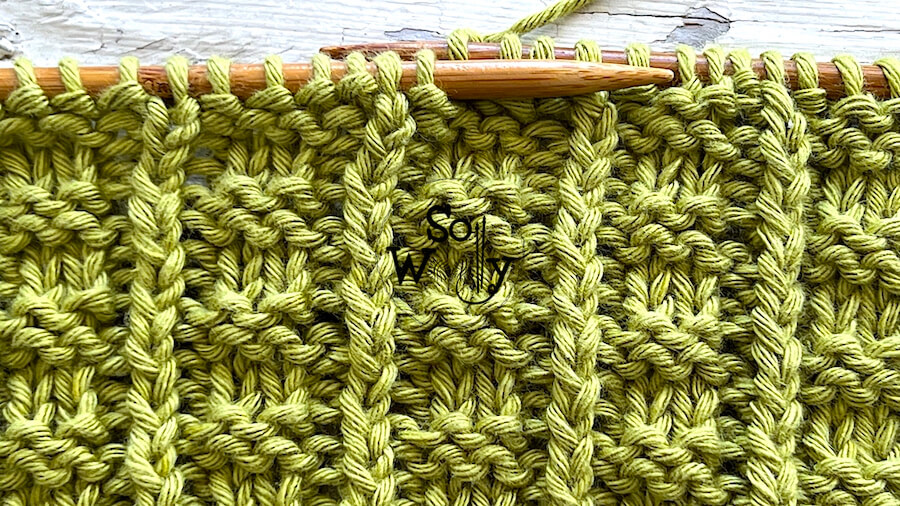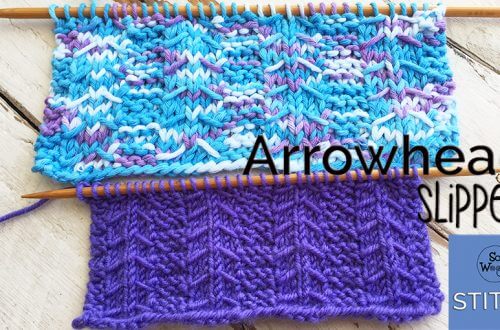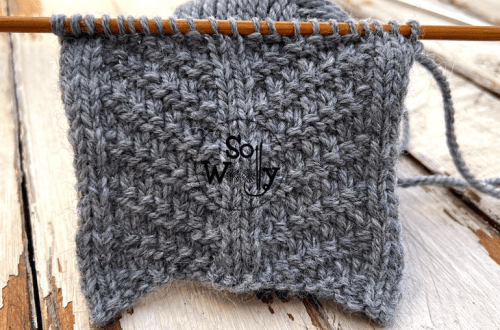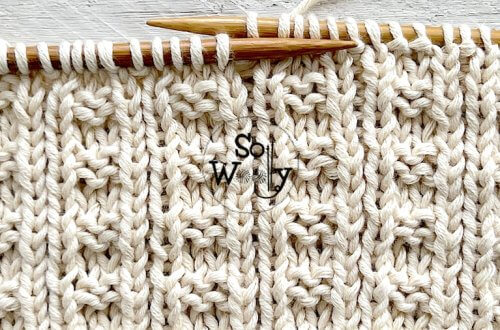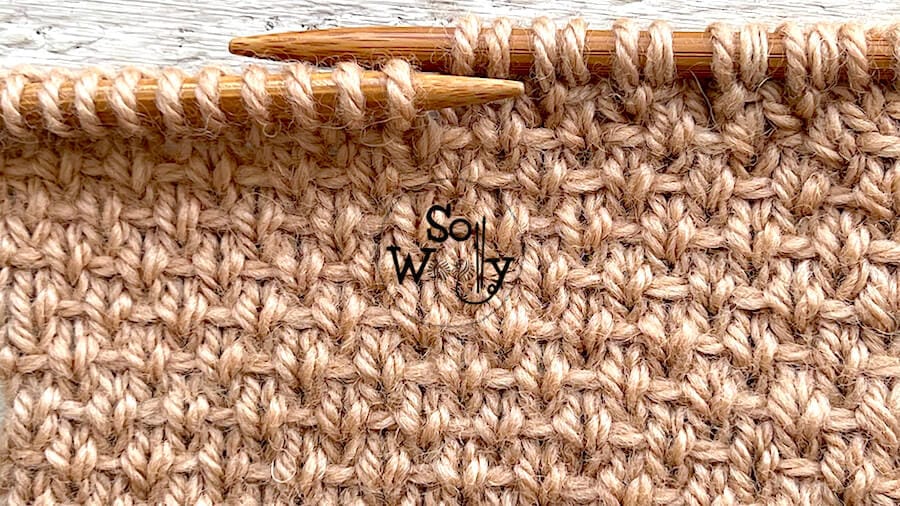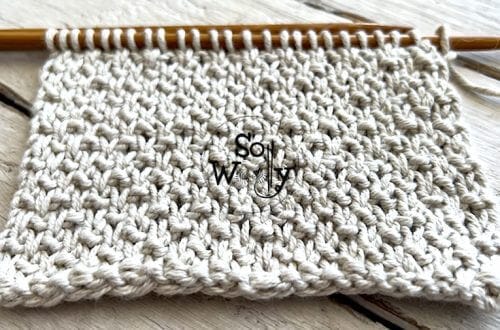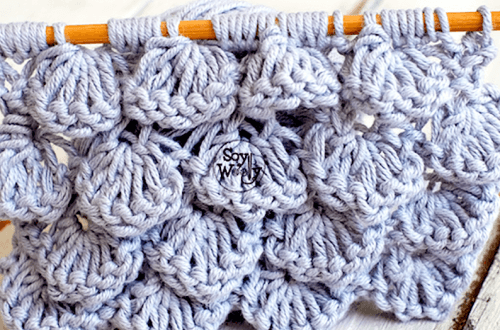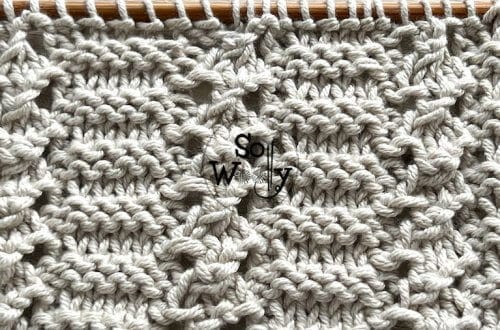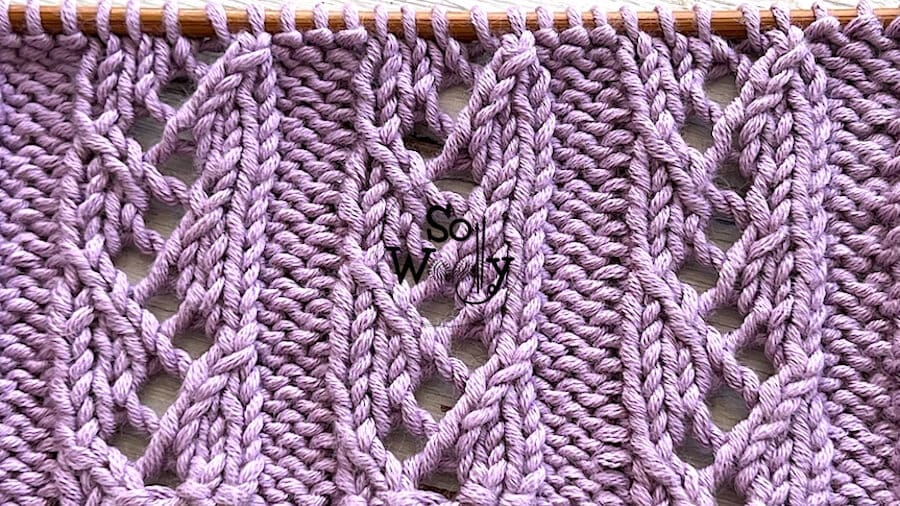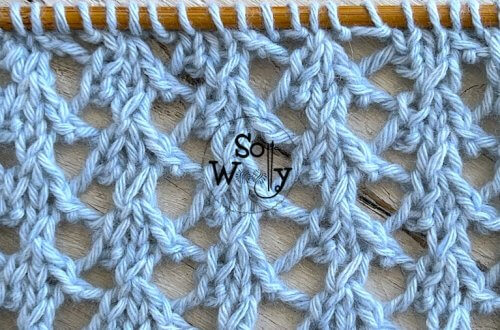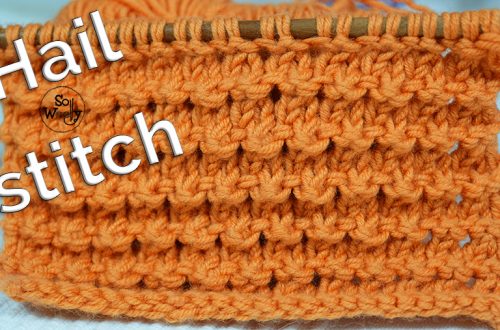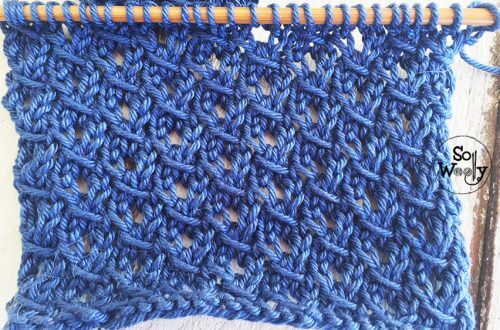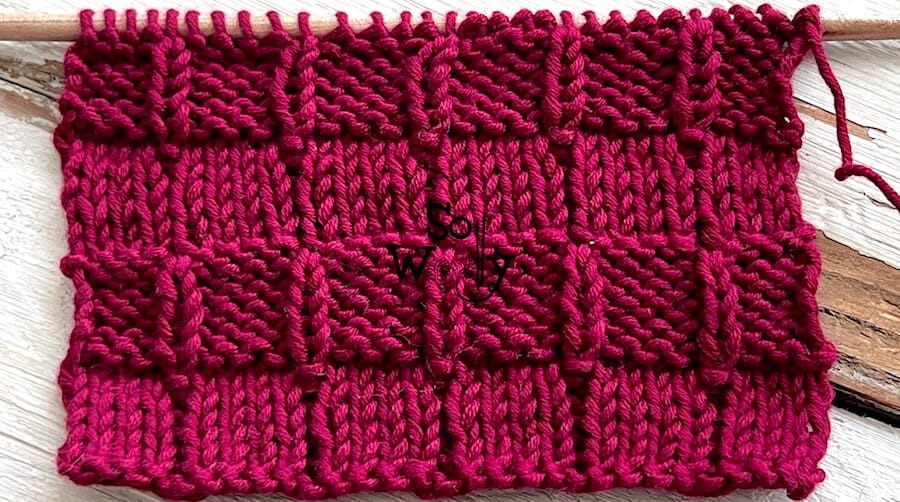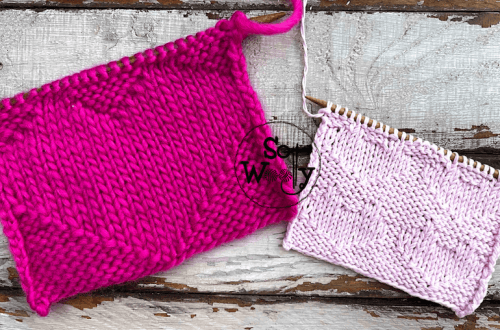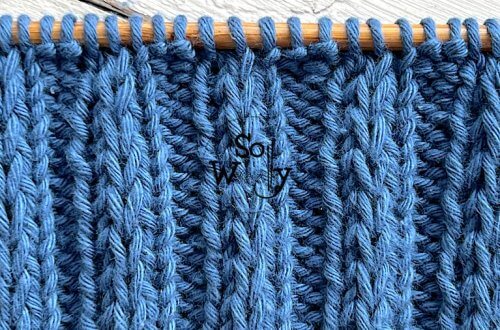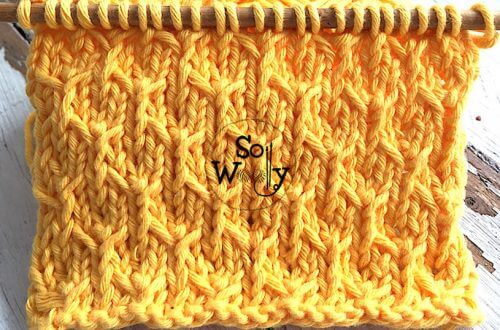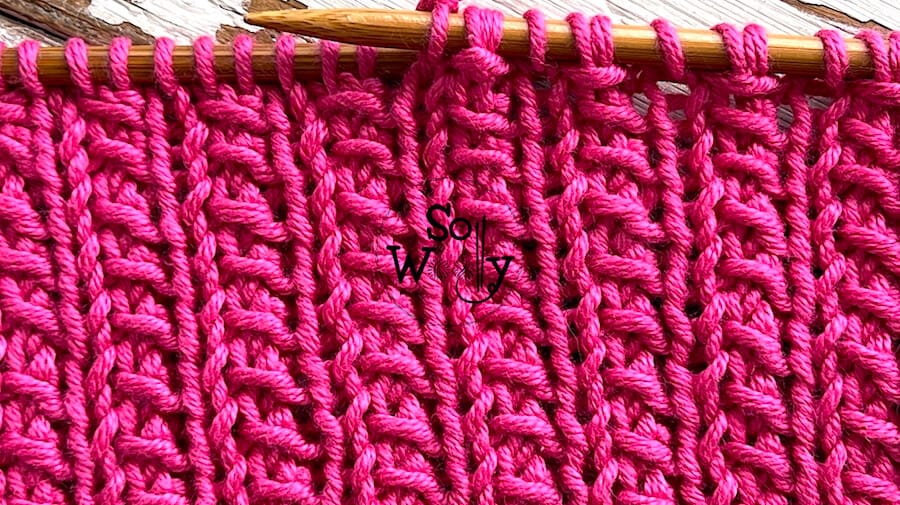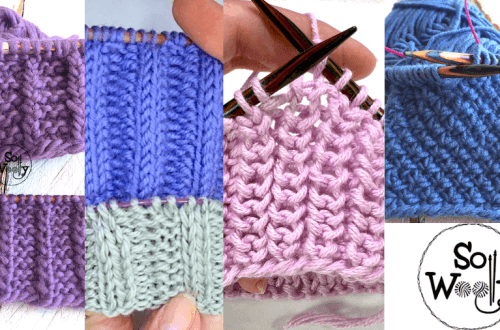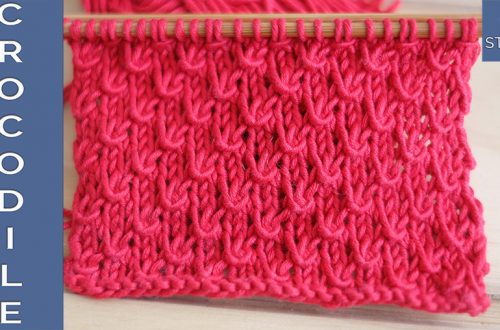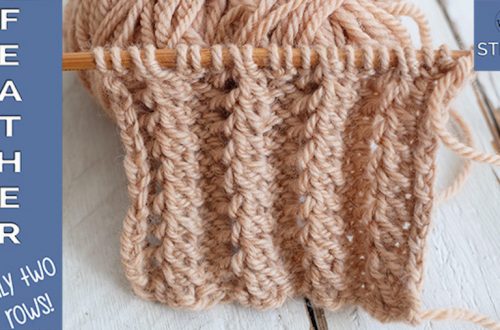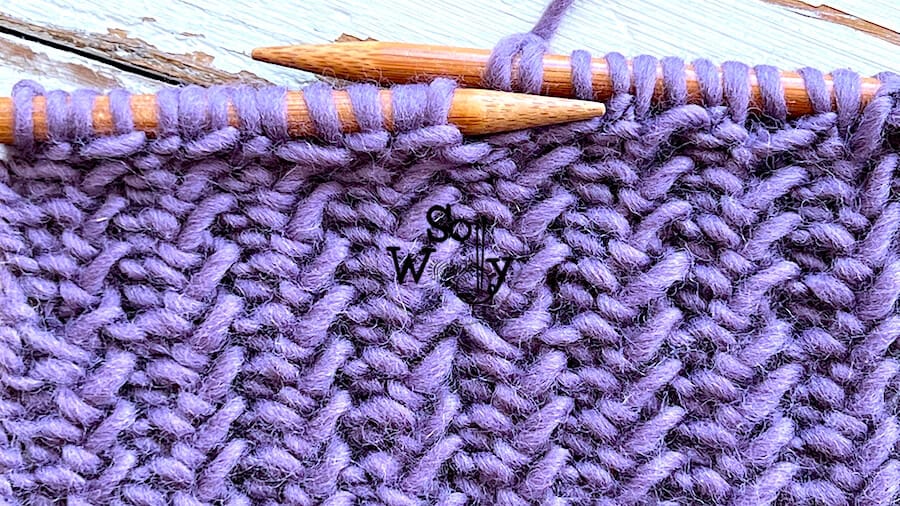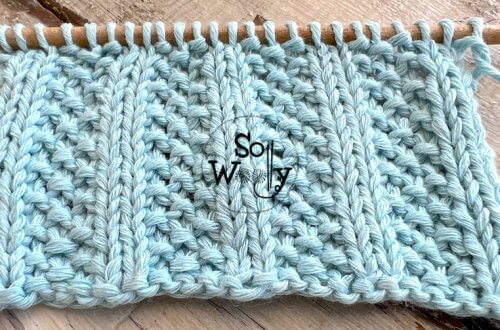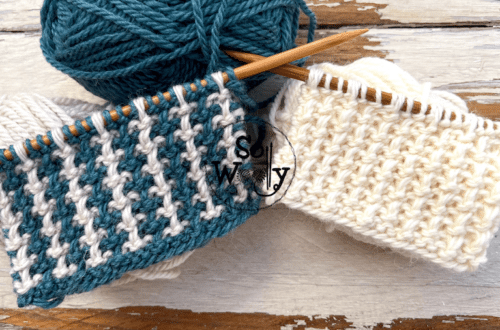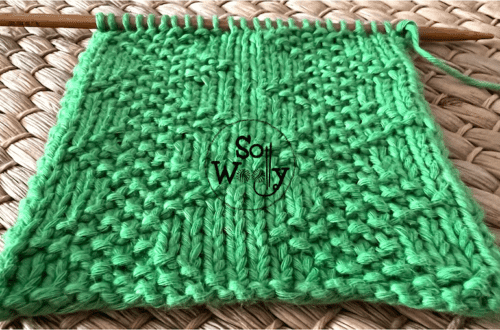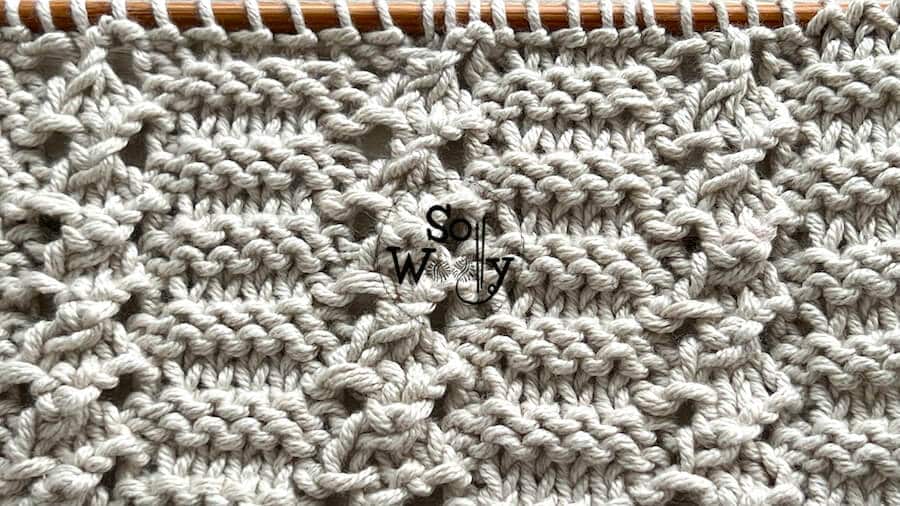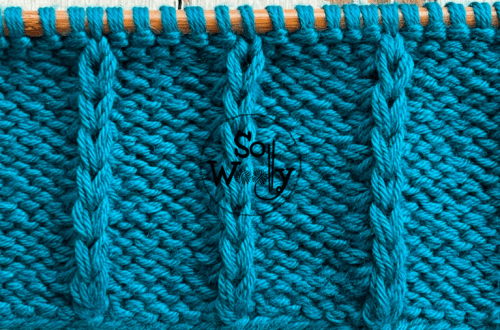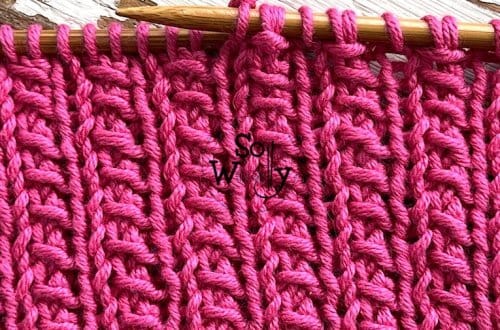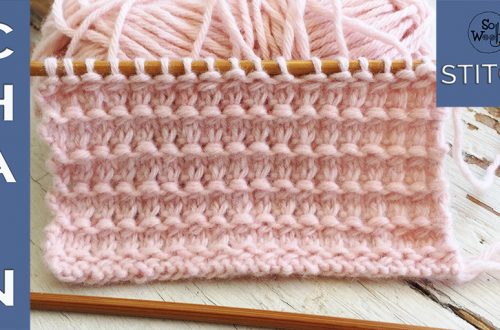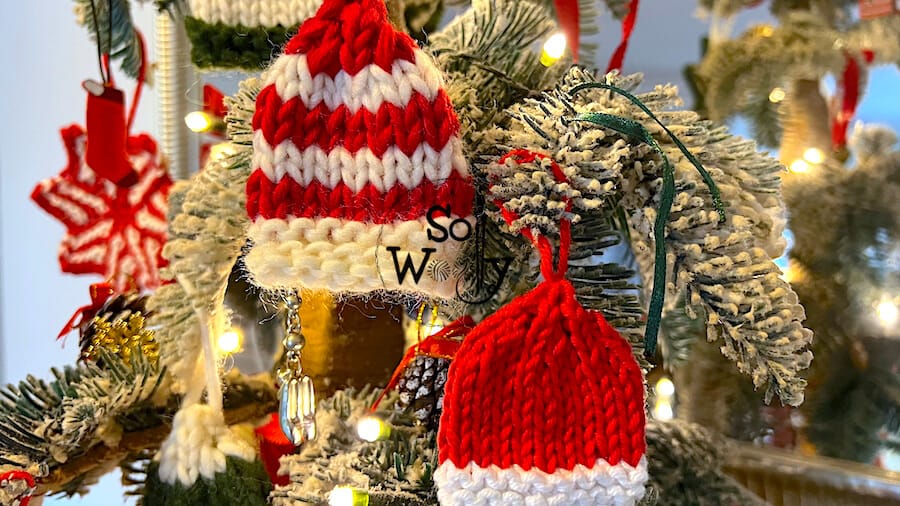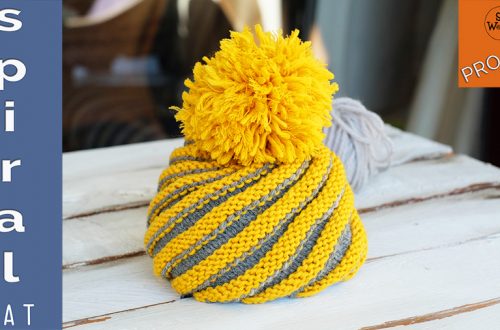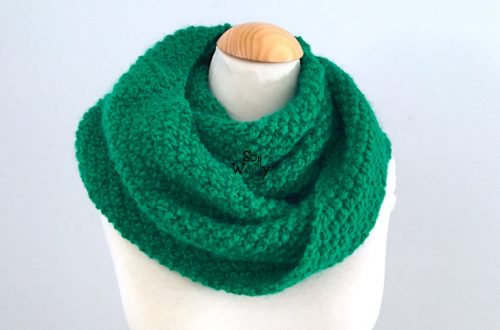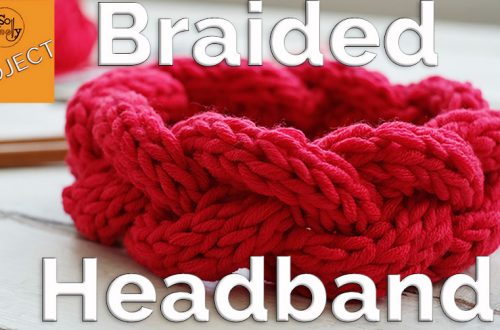-
How to knit the Sailor’s Rib stitch pattern (only 4 rows!)
Today, you’ll learn how to knit the Sailor’s Rib stitch; a textured pattern, full of advantages for us knitters (similar yet more detailed than the Little Boxes stitch we practiced years ago). Firstly, it’s a super easy four-row repeat pattern, which combines only knit and purl stitches, great for beginners (no need to increase or decrease at all). Secondly, although both sides are different, I’d say that the Sailor’s Rib stitch is a reversible knitting pattern. Why? Well, the so-called “wrong side” of the work looks pretty too, so it’s a nice option for scarves, throws, blankets, etc. Last but not least, it doesn’t curl or bend. The fabric lays…
-
How to knit the Woven stitch pattern (four rows only!)
In today’s tutorial, I’m sharing how to knit the Woven stitch pattern, step by step. It’s another classic of the knitting world, one of those patterns that look like fabric, just like the Tweed stitch we practiced a while ago. Actually, I’m in love with it… (please don’t tell the Irishman). And not only because it forms a tiny pattern; an adorable design that will show up even in the smallest garments, but because it’s so easy! It’s easy to do and to memorize; there are just two steps that will be repeated time and time again. Additionally, the Woven stitch is a four-row repeat pattern, two of which are…
-
How to knit the Zig-Zag Lace #2 stitch pattern
Today, I’m sharing how to knit the Zig-Zag Lace #2 stitch; an eight-row repeat pattern, ideal for becoming a master/ mistress when knitting lace! Why? Well, this pattern involves the most common decreasing techniques (the simple decrease and knitting two stitches together), plus the most used increase there is, the yarn over. Actually, the Zig-Zag Lace #2 stitch has a lovely texture to it, sophisticated yet easy to do, because it’s pretty intuitive. I’ve used it for the sleeves of a cardigan, to add a subtle touch of lace, and it looks amazing! But it could be used for a whole sweater too; great if we’re looking for a fabric…
-
How to knit the Picket Fences stitch pattern
Today, you’ll learn how to knit the Picket Fences stitch, another member of the checkerboard patterns, similar to the Embossed Blocks stitch that we practiced last year. The Picket Fences stitch is perfect for beginners; there is no need to slip, increase or decrease stitches. Actually, the only techniques required are knit + purl… easy-peasy! In addition, it lays flat, the edges don’t curl or bend, due to the frequency of knit and purl stitches per row. Another advantage is that it’s a reversible knitting pattern; it’s identical on both sides 😉 So, if you’re thinking of knitting a scarf, or a blanket, for example, this one is for you.…
-
How to knit a textured stitch pattern in just two rows
Today, you’ll learn how to knit a textured stitch pattern, in just two rows! Actually, if you can knit and purl, this one is for you; it’s so easy that one of those two rows is a plain purl row 😉 Although this textured stitch is not identical on both sides, to me, it’s a reversible pattern… Why? Well, both sides of the work look amazing, so you can decide which side you want to be the right side of your project. It reminds me of the Jute stitch that we practiced a while ago, but the other side of the work has a richer texture to it, it’s gorgeous…
-
How to knit a one-row reversible pattern (with knit stitches only)
In this post, you’ll learn how to knit a one-row repeat reversible stitch pattern; just 3 simple steps will be necessary throughout the project. In addition, it has a rich texture to it, and it’s identical on both sides, which makes it perfect for a lot of projects, such as scarves, blankies, infinite cowls, or even a cardigan or pullover/sweater/jumper/jersey (delete where applicable). The possibilities are endless! Furthermore, it lays flat; it doesn’t roll up or bend on any side, so it’s not necessary to add an edge. In fact, I’ve made 2 swatches: One, using 100% Merino wool yarn, and the other, using 100% cotton yarn, and neither of…
-
How to knit the adorable Clover stitch pattern
In this post, I’m sharing how to knit the Clover stitch; the perfect combination between an openwork and a dense fabric (especially important when we don’t want too many holes in our knitwork). It’s a lovely four-row repeat pattern. Its design creates knit and purl columns, divided by a little touch of lace. #Texture !!! In fact, the Clover stitch not only looks pretty; you can use it in a wide range of projects: From a top, or a sleeveless vest (open or closed), to a sweater or cardigan, or even a blanket. Although it’s not a reversible pattern, the Clover stitch will work even for a scarf, because the…
-
How to knit Christmas Decorations: Mini Stockings (2 sizes)
In this post, you’ll learn how to knit more Christmas Decorations; this time, it’s all about Mini Stockings in 2 sizes, with straight needles. Apart from being quick to knit, this project is pretty easy to do. If you can knit and purl, you can do it. Actually, I think it’s easier than the Christmas Ball Ornaments we practiced before 😉 Furthermore, the pattern comes in 2 sizes: The Mini Stockings, which are 3 in (7.6 mm) long; and the larger ones, which are 5.5 in (14 mm) long. Last but not least, take into account that any kind of fiber can be used: Wool or cotton yarn, Alpaca, bamboo,…
-
How to knit Easy Mini Hats with straight needles (Christmas Decorations)
In this tutorial, you’ll learn how to knit more Christmas decorations; we will make easy Mini Hats because the holidays are just around the corner! For some time now I have been sharing patterns and tutorials for knitting Christmas decorations with you such as the Little Trees, and the Twinkle Stars. The truth is that a couple of years have passed, and I had forgotten them;), until last week, when I published the Easy Christmas Ball Ornaments. And luckily enough, many followers asked me to do more! So today, while there is still time, I want to encourage you to start knitting these beautiful Christmas Mini Hats that you can…
-
How to knit Christmas Ball Ornaments with straight needles
Today, I’m sharing how to knit easy Christmas ball ornaments (with straight needles, not in the round). To kick off the Christmas tutorial season, we’re going to do something simple and relaxing, yet super cute (as easy as the Christmas Tree Ornaments we practiced a while ago). In fact, it’s a quick and easy knitting project, to decorate the Christmas tree in 1, 2, or more colors, you choose! Honestly, if you can knit and purl, you can do it! I have chosen these two colors, but the pattern is very flexible, so you can knit whatever your heart desires with these special Christmas balls! Without further ado, grab your…
